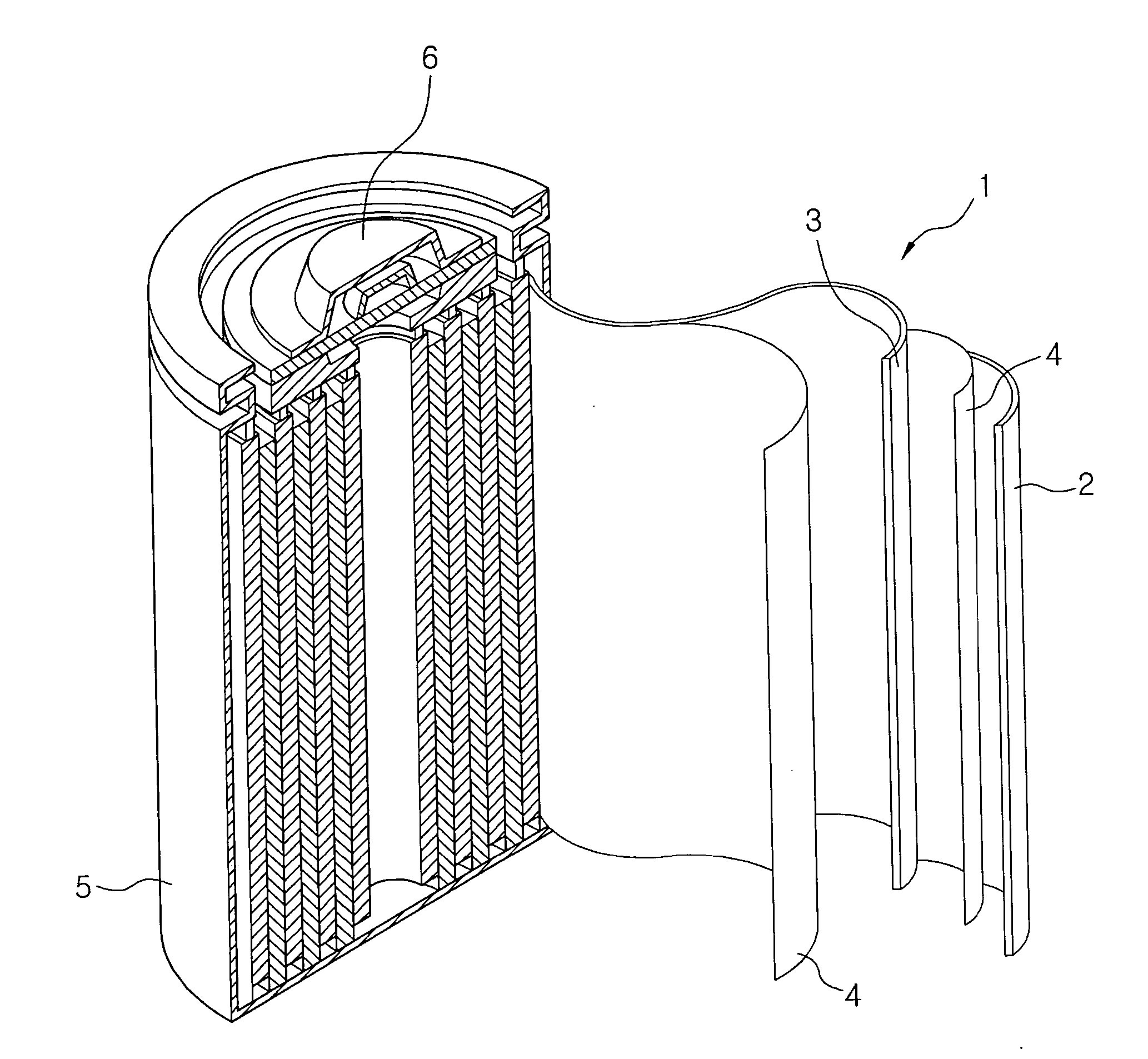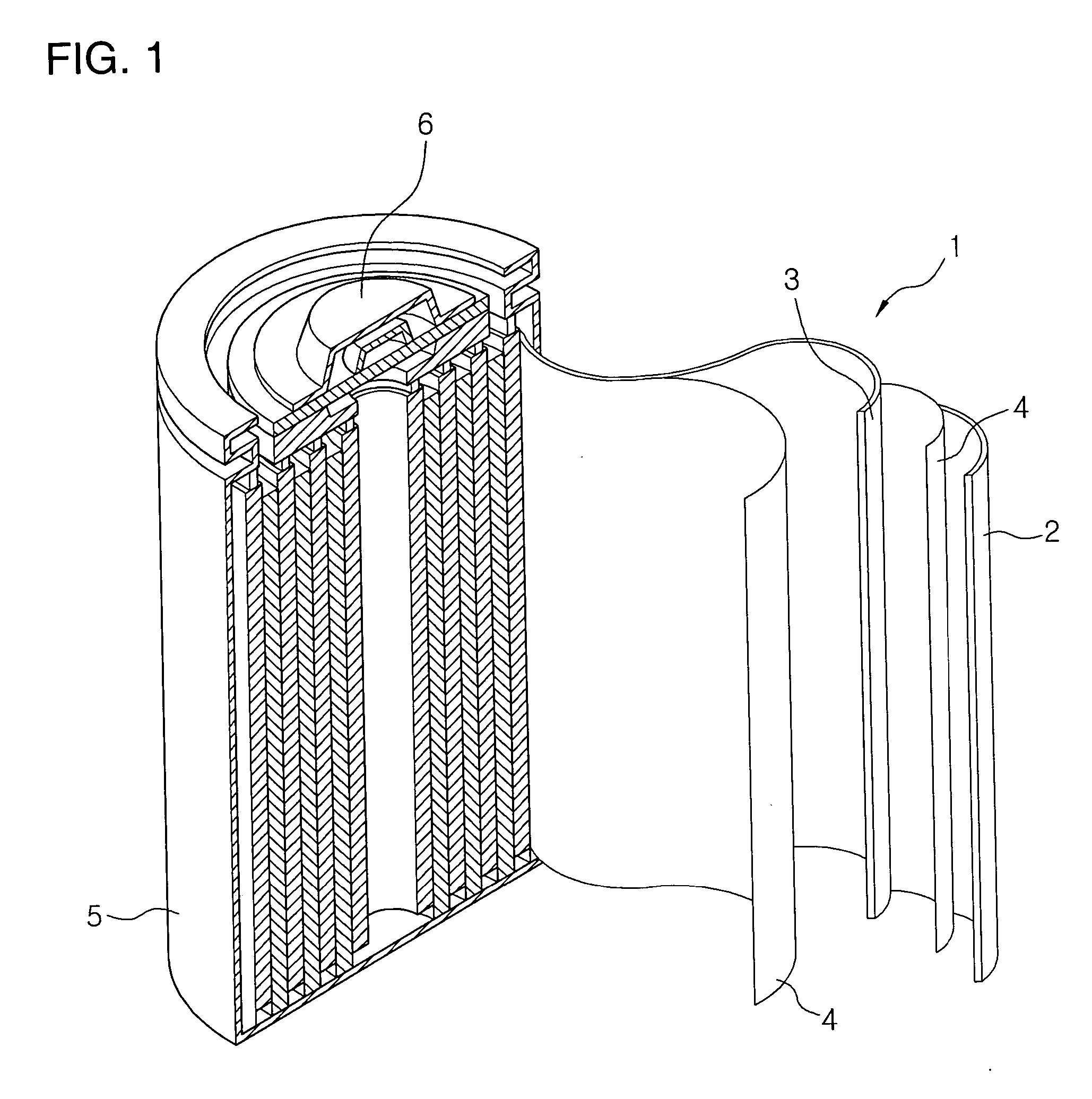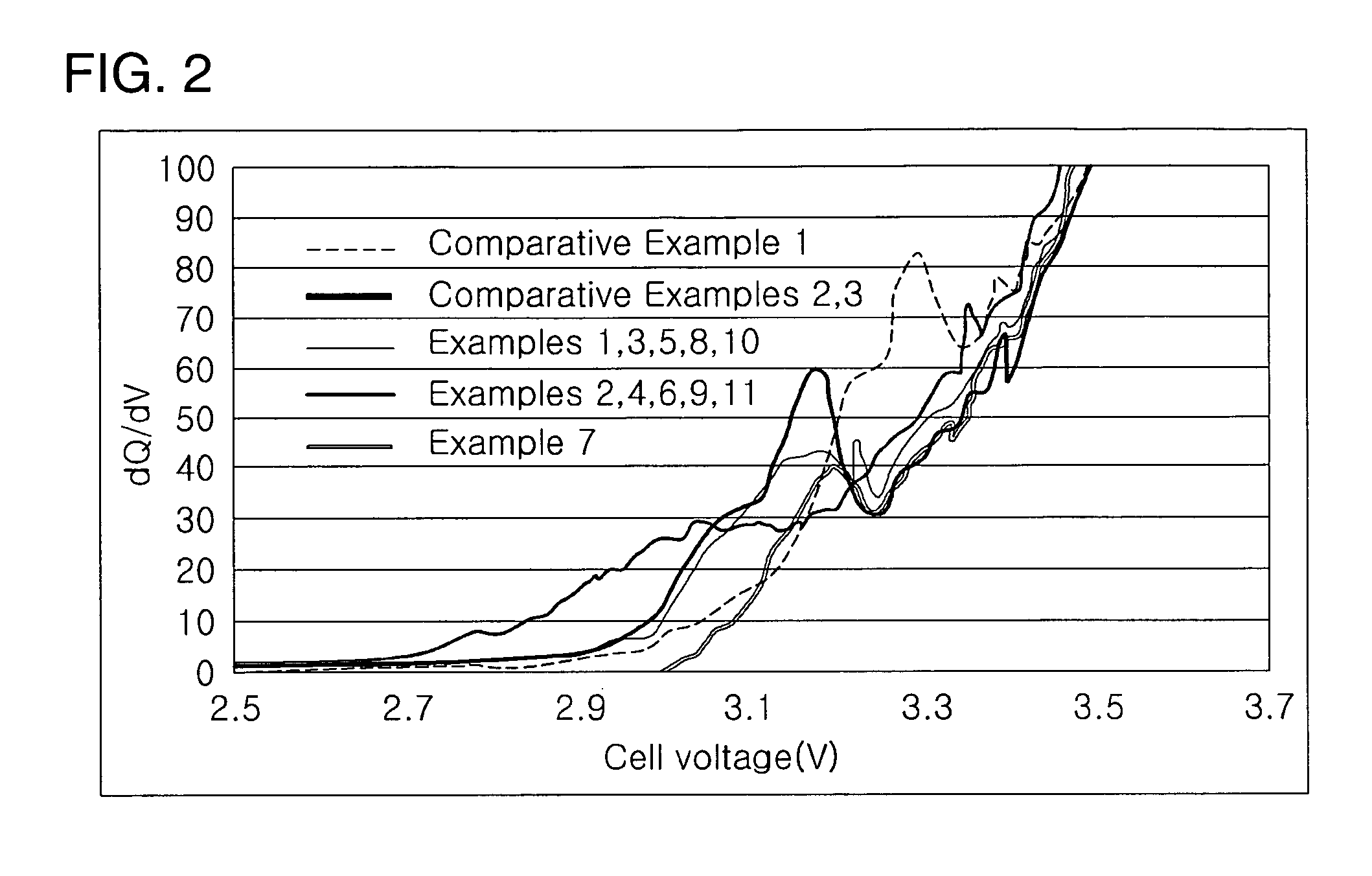Electrolyte for lithium secondary battery and lithium secondary battery comprising same
a lithium secondary battery and lithium secondary battery technology, which is applied in the direction of non-aqueous electrolyte cells, cell components, electrochemical generators, etc., can solve the problems of internal short circuit, excessive expansion of the battery, fire, explosion, etc., and achieve the electrochemical properties of lithium batteries, high temperature storage characteristics, and battery safety.
- Summary
- Abstract
- Description
- Claims
- Application Information
AI Technical Summary
Benefits of technology
Problems solved by technology
Method used
Image
Examples
experiment 1
oulomb Efficiency
[0071]FIG. 2 is a graph comparing the coulomb efficiency upon initial charging of the organic solvents used in preparing the electrolytes according to Examples 1-11 and Comparative Examples 1-3.
[0072] As shown in FIG. 2, GBL (gamma-butyrolactone), GVL (gamma-valerolactone), and GCL (gamma-caprolactone) form passivation films on the negative electrode of the lithium ion battery upon initial charging. These materials play an important role in lithium batteries. EC is used in Comparative Example 1, GBL in Comparative Examples 2 and 3, GCL in Examples 1, 3, 5, 8, 10, and 12, GVL in Examples 2, 4, 6, 9, and 11, and FEC in Example 7.
experiment 2
[0073] Vaporization point, flash point, and heat of combustion of the organic solvent used in the electrolytes of Comparative Examples 1 to 3 and Examples 1 to 15 were measured. The results are shown in Table 2 below.
TABLE 2VaporizationFlash pointHeat of Combustionpoint (° C.)(° C.)(KJ / Kg)EC24316014,695EMC932419,780DEC1263121,114GBL2059824,110GCL2199831,072GVL21010029,870FEC25012210,672GOL21511036,209
experiment 3
f Battery Performance
[0074] The cycle-life characteristics at room temperature and at a high temperature (60° C.), overcharge inhibiting properties, and storage stability at a high temperature (80° C.) for Examples 1 to 7 and Comparative Examples 1 to 3 were measured. The results are shown in Table 3. The detailed method for measuring these battery characteristics is explained below.
[0075] The cycle-life characteristics at room temperature and at the high temperature were measured by repeating the charge and discharge. First, the battery was charged under constant current and constant voltage. Specifically, the battery was charged at 1C under constant current until the voltage reached 4.2V, and then charged under constant voltage at 4.2V for 2 hours.
[0076] The battery cells were then discharged at a constant current. Specifically, the discharge was continued until the voltage reached 3.0V at 1C. The capacity retention ratios at the 100th cycle are shown in Table 3. As used, “capac...
PUM
| Property | Measurement | Unit |
|---|---|---|
| crystallite size | aaaaa | aaaaa |
| volume % | aaaaa | aaaaa |
| volume % | aaaaa | aaaaa |
Abstract
Description
Claims
Application Information
 Login to View More
Login to View More - R&D
- Intellectual Property
- Life Sciences
- Materials
- Tech Scout
- Unparalleled Data Quality
- Higher Quality Content
- 60% Fewer Hallucinations
Browse by: Latest US Patents, China's latest patents, Technical Efficacy Thesaurus, Application Domain, Technology Topic, Popular Technical Reports.
© 2025 PatSnap. All rights reserved.Legal|Privacy policy|Modern Slavery Act Transparency Statement|Sitemap|About US| Contact US: help@patsnap.com



